
To celebrate the International Day for Monuments and Sites, also known as World Heritage Day, on April 18th, we are delighted to invite you on a visual journey through SCALA Archives.
Explore the 7 wonders of the ancient world and the 7 wonders of the modern world through our collection of documentary photography, historical documents and video clips, now accessible via our website for your “in motion” projects.
The concept of “wonders of the world” has been passed down through the centuries: from the philosophers of the Middle Ages, through the explorers of the modern era, to the scholars of the 19th century. With the passing of time, geographical explorations and archaeological discoveries intertwined leading to fascinating reconstructions of the ancient world.
The list of the 7 wonders of the world can be traced back to the classical world. Early written sources, such as those of Herodotus in the 5th century B.C. and Martial in the 1st century A.D., were focused on remarkable architectural achievements which were considered worthy of preservation for future generations. The oldest known albeit partial list dates from the 2nd century B.C. and is found on a fragment of papyrus known as the Laterculi Alexandrini.
A more comprehensive list from the same period was identified thanks to the epigram of Antipater of Sidon, transcribed in the Middle Ages in the Palatine Anthology, compiled in Byzantium, now partly available in Heidelberg and partly at the National Library of France.
Over the centuries, the list of the 7 wonders of the world has included the following sites, of which only the first one remains standing today: The Pyramid of Cheops (Egypt).
The Great Pyramid of Giza (also known as the Pyramid of Cheops) in Egypt is the sole surviving wonder of the ancient world and remains accessible to visitors today. It is one of the three pyramids located within the Giza burial complex and it held the title of the world’s tallest building until the Middle Ages. Constructed in 2570 BC, this remarkable structure was assembled using 2.3 million stone blocks. With a towering height of 180 meters and a base measuring 230 meters on each side, some scholars believe that the pyramid’s dimensions were determined through mathematical and astronomical calculations related to the earth’s circumference, parallels, and meridians.
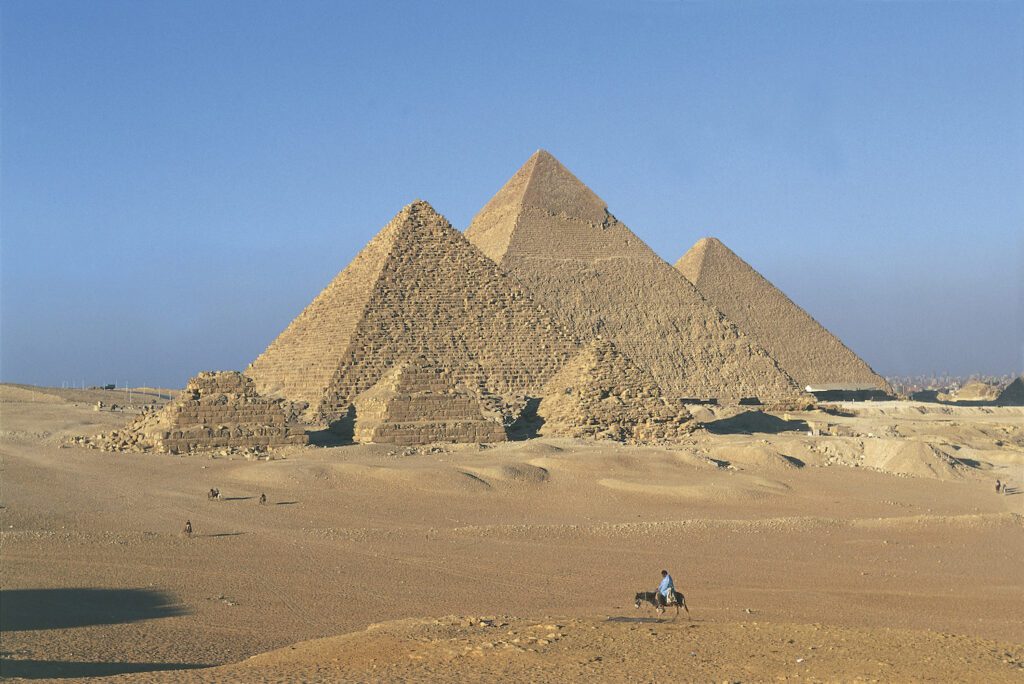
The Hanging Gardens of Babylon, situated in Mesopotamia, have long captivated people thanks to their enigmatic nature and unspecified location. Authors throughout the centuries have tried to describe, depicter, and reconstruct these gardens, which remain steeped in mystery. Today, there are only theories about their purpose, most likely ornamental rather than functional, and about the intricate irrigation system that sustained their lush vegetation.
The Statue of Zeus at Olympia (Greece): stood at approximately 36 feet tall and was crafted from gold and ivory. This masterpiece was created by the renowned sculptor Phidias and garnered widespread acclaim. This enormous statue was housed in the temple dedicated to him, father and ruler of all gods, near the acropolis of Olympia. . According to historical accounts a court official of Emperor Theodosius II relocated the colossal stuatue to Constantinople where it was destroyed by fire in 475 A.D.
Temple of Artemis (Turkey) is renowned as one of the most impressive religious complexes of antiquity Situated in a sacred area that had roots dating back to the Bronze Age, it was born as a site of veneration of Artemis the Great Mother. Historical reconstructions reveal that the temple, designed in the Ionic style, boasted a towering marble colonnade standing at approximately 54 feet. Within the temple, a substantial statue of the goddess Artemis, reaching a height of approximately 6 feet , was housed.
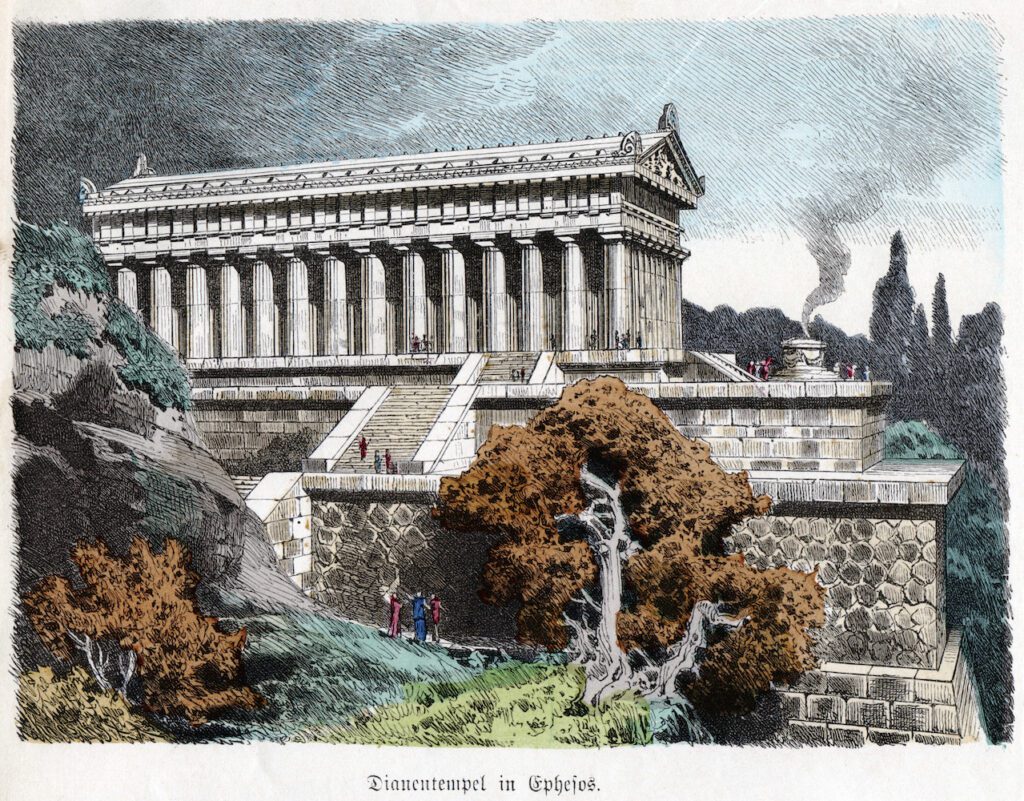
The Mausoleum of Halicarnassus in Turkey is a grand burial monument dedicated to Mausolus II, a satrap of the archaemenid Persian Empire , by his wife and sister Artemisia. According to Pliny the Elder’s account it took nearly 20 years to construct and involved the recruitment of the most skilled architects and artists of the era.. Fragments of this monument, including the remnants of the quadriga that adorned the top of the mausoleum, are now housed in the British Museum. What survived the powerful earthquake in the fourteenth century was incorporated into the fortifications of Bodrum, which were built by the The Order of Knights of the Hospital of Saint John of Jerusalem , stationed in Rhodes in the fifteenth century.
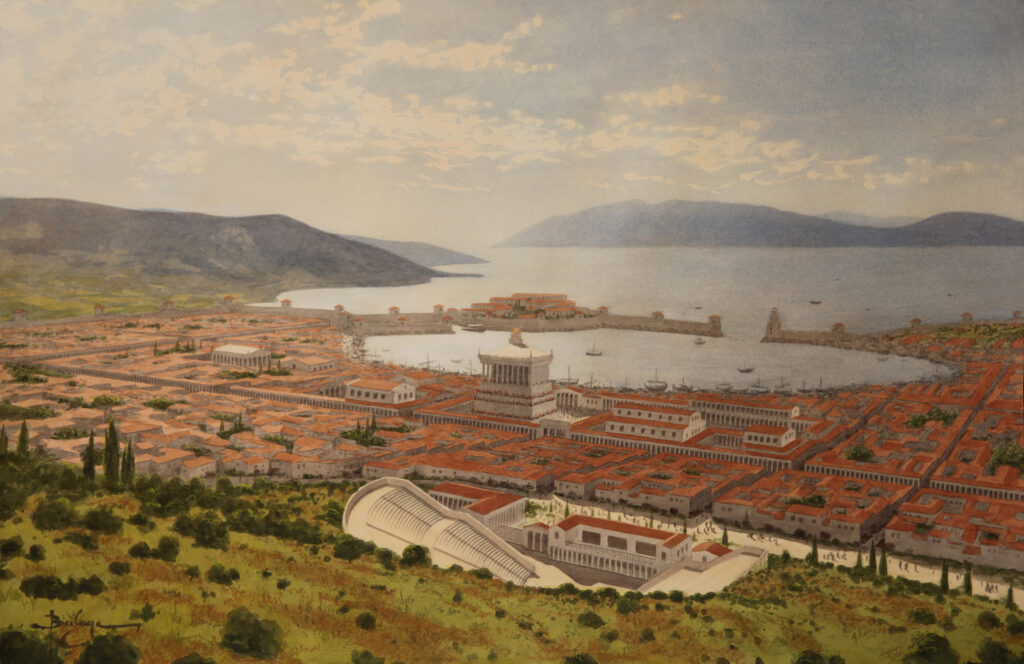
The Colossus of Rhodes (Greece): the citizens of the island of Rhodes commissioned the colossal statue in honour of Helios after surviving a siege by Demetrius Poliorcetes in 305-304 B.C. According to Pliny the Elder, the statue, which was approximately 96 feet tall and designed by Carete di Lindo, stood for a relatively short time before being destroyed by an earthquake in 226 B.C. The remains of the statue remained on the island for centuries, eventually being repurposed during the Turkish domination.
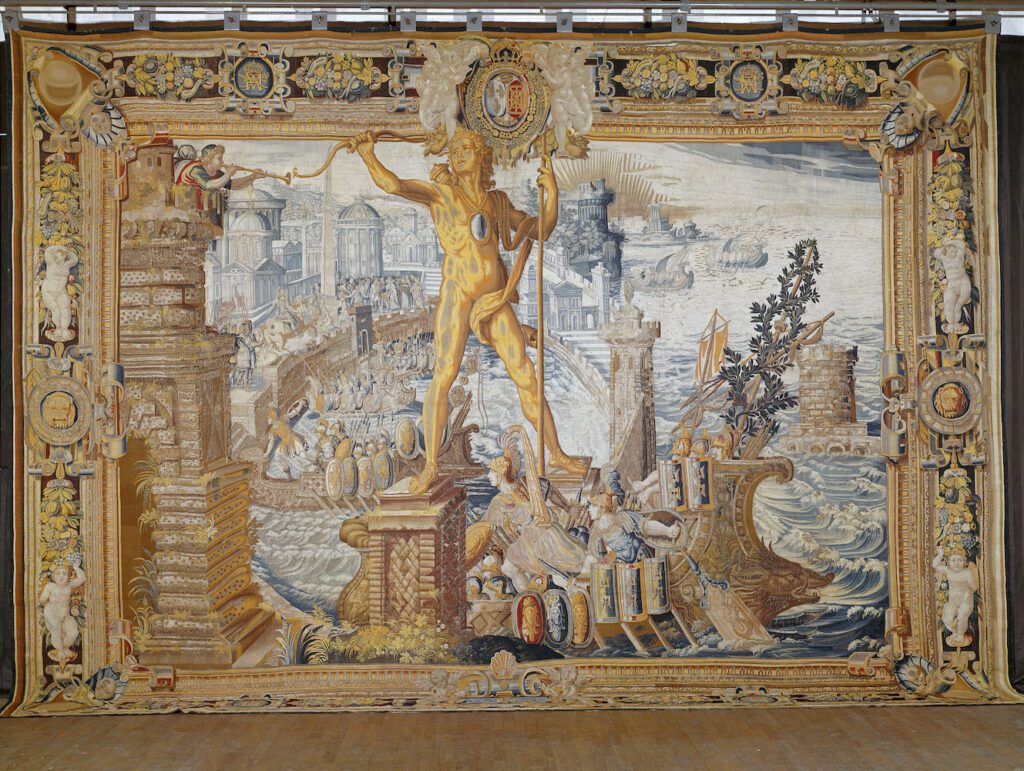
The Lighthouse of Alexandria (Egypt): stood as a monumental symbol until approximately 1323.
Situated in the city of Ptolemya, this remarkable structure was a testament to both grandeur and engineering, and was the first of many similar constructions which were subsequently erected along the Mediterranean coasts.
Its octagonal tower reached a height of 402 feet and was visible from a distance of approximately 50 kilometers, an undeniable and outstanding achievement in ancient architecture.
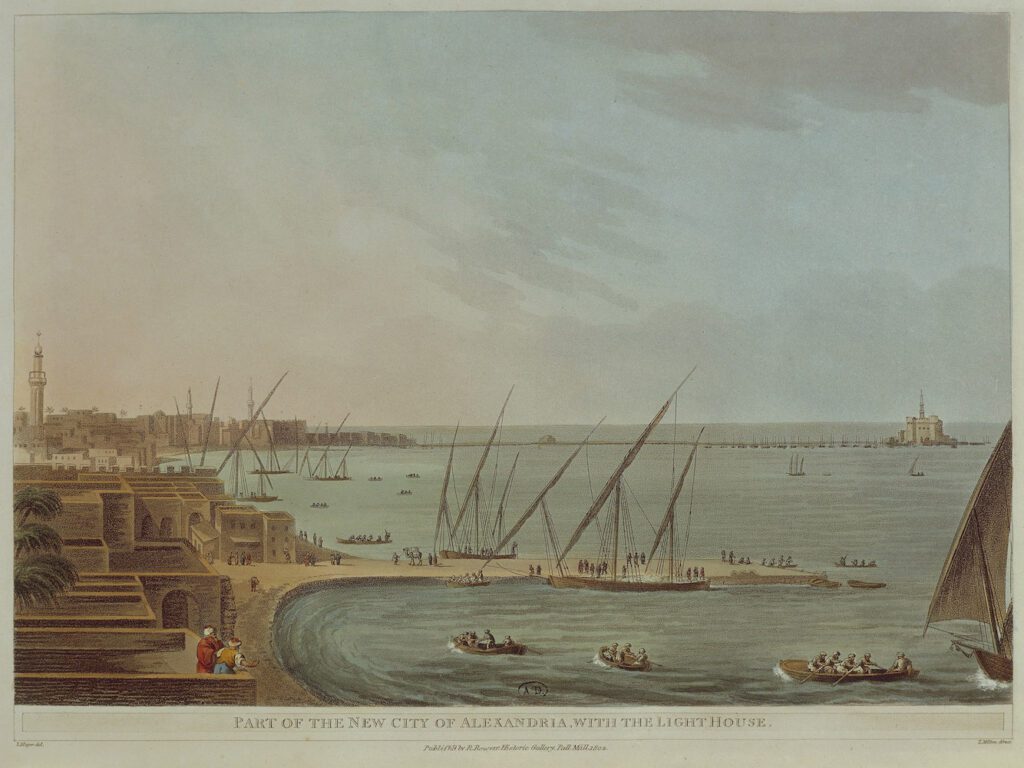
Centuries later, in 2007, a revised list of the 7 wonders of the world was unveiled, now known as the “modern wonders”.
This new compilation of sites, celebrated for their intricate architecture and historical significance, emerged from a highly successful global public competition which was initiated by a private Swiss company during the Sydney Olympics in 2000. Over 150 sites and monumental structures were considered, and the final selection, reviewed by a panel of esteemed experts (including former UNESCO president Federico Mayor), was revealed on July 7, 2007.
Below is the current list of the 7 wonders of the world, along with a curated selection of images.
Chichén Itzá, located in Mexico, is home to one of the most significant and renowned Mayan sites. The architectural complex of this city-state features notable structures such as the pyramid of Kukulcán (or El Castillo), the Temple of the Warriors, the Caracol (an astronomical observatory), and the ball court. Although the Spanish discovered Chichén Itzá in the 16th century, it wasn’t until the mid-19th century that it became the focus of archaeological investigations. Today, it stands as one of the world’s most visited archaeological sites and has been a UNESCO World Heritage Site since 1988.
The Christ the Redeemer statue in Brazil is an iconic symbol of Rio de Janeiro, serving as a place of worship for believers and a cultural landmark known worldwide.
Erected between 1922 and 1931 to celebrate Brazil’s independence centenary, this towering 90 feet high statue remains a significant site. It has not been nominated as a UNESCO World Heritage Site, however the entire city of Rio de Janeiro has been included in the list several years.

Machu Picchu (Perù): Located within the Andean peaks of Peru, Machu Picchu was constructed as an Inca city in the 15th century and remained hidden until 1911, when the American explorer Hiram Bingham located it. The discovery renewed interest in the study of the entire Inca culture. Today, Machu Picchu is one of the world’s most popular tourist destinations, despite its challenging accessibility. Situated on a rocky ridge at an altitude of 2400 meters, the site encompasses over 200 buildings.
The Great Wall of China, a magnificent feat of military engineering, is a vast fortification spanning 21,196 kilometres, consisting of various sections constructed over different historical periods. From the seventh century B.C., each dynasty made contributions and carried out modifications to meet the requirements of warfare, defending against barbarian invasions and nomadic migrations. Today, parts of this immense heritage are still visible, attracting millions of visitors who walk along the Wall each year. Its iconic presence has also left an indelible mark featuring in well-known films such as The Last Emperor (Bernardo Bertolucci, 1987) and The Great Wall (Zhang Yimou, 2016).
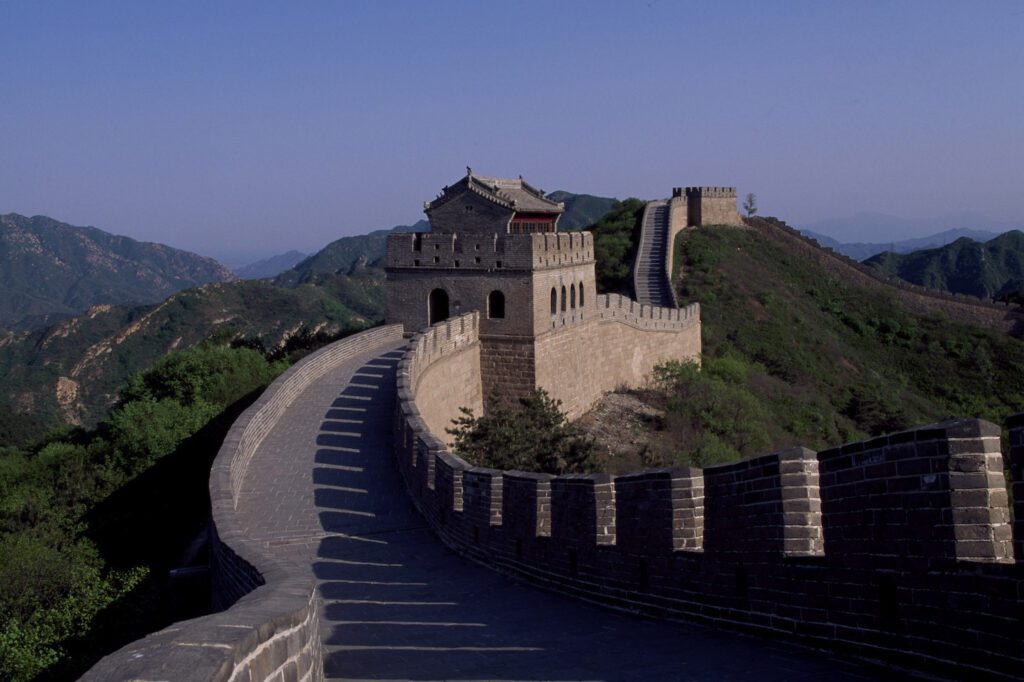
Petra, located in Jordan, is renowned for its exceptional natural and architectural beauty, as well as its historical and cultural significance.
This intricately carved archaeological site, dating back to the sixth century B.C, served as a strategically positioned city along the trade routes between the East and West. Despite being in decline during Roman times, it was rediscovered by the Swiss explorer Johann Ludwig Burckhardt in 1812. One of its most iconic structures is the Al-Khazneh, also known as “The Treasury,” a magnificent mausoleum carved into the red rock canyon.
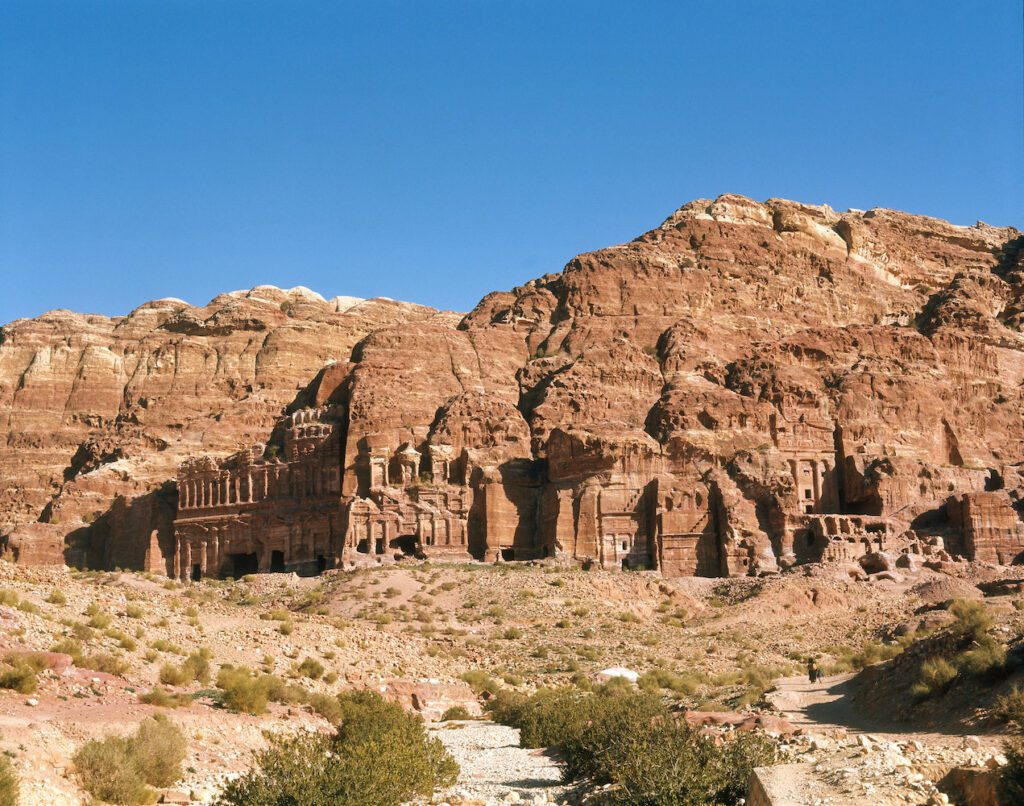
Taj Mahal located in India, is a masterpiece of Mughal architecture. It was built as a mausoleum in memory of the Mughal Emperor Shah Jahan’s beloved wife and stands as a symbol of peace today. Commissioned in 1632, the building is renowned for its symmetrical and clean forms, as well as the pristine white marble, intricately carved details, and complex mosaics. The central building, which is accessible to visitors rigurously barefoot, is situated at the centre of four minarets.
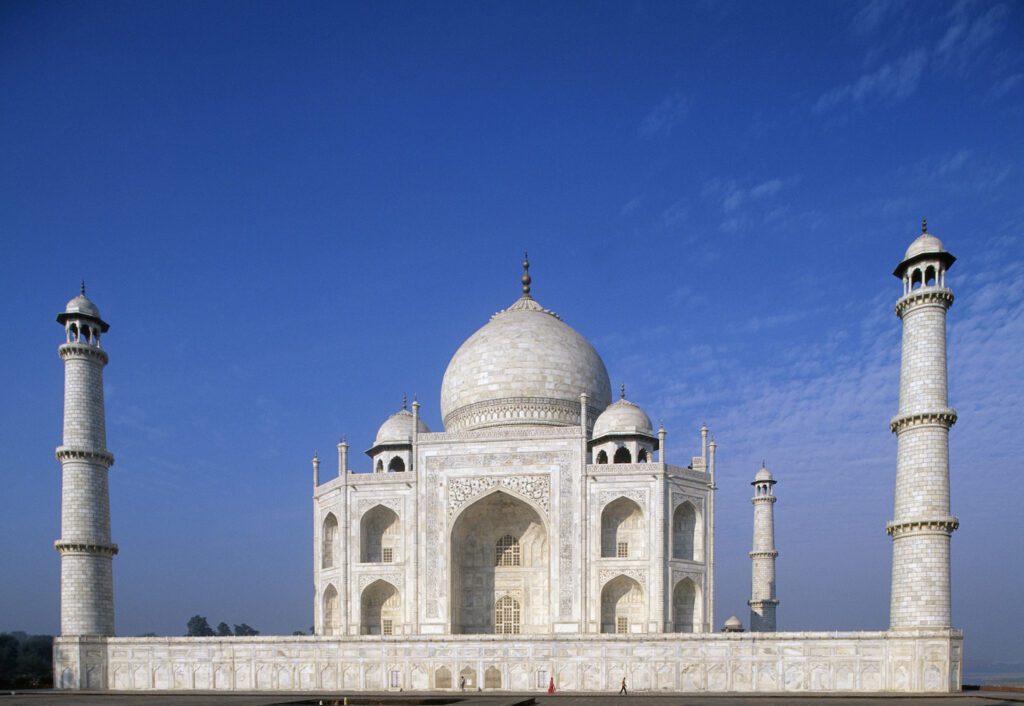
The Colosseum, also known as the Flavian Amphitheatre, stands as an iconic archaeological monument that embodies the magnificence of the Roman Empire. Its construction began under the rule of Emperor Vespasian around 70 A.D and was finalized during the reign of his successor, Emperor Titus. This well-preserved structure was a hub for public spectacles, hosting events such as gladiator fights, wildlife hunts, executions, and theatrical performances. Even solely through visual representations, the intricate engineering of the Colosseum, with its system of elevated arches and underground rooms, showcases the remarkable complexity of its design.
Since the end of World War II, the majority of the world’s wonders have been recognized as UNESCO World Heritage Sites. We therefore embrace the opportunity to celebrate the International Day for Monuments and Sites, established in 1982 by ICOMOS (International Council of Monuments and Sites) and the UNESCO General Conference, and is set for the 18 of April.
Scala Archives curates and distributes documentary photos shot by professionals who have devoted their careers to exploring and documenting archaeological sites and historically significant locations worldwide.
Notable contributors include Giorgio Nimatallah, Mark Cohen, Photo Josse, Andrea Jemolo, Gabriele Croppi, among others. The valuable work of these and many other photographers has contributed over time to create a comprehensive photographic collection which is extremely valuable in tracing the History of Humanity through its Monuments.
Discover a collection of UNESCO sites and enjoy a wide variety of video and audio-visual material. Additionally, SCALA Archives preserves and provides licenses for a wide range of video and audio-visual content for various purposes.
If you need help in finding the right content for your project or need information about licensing Scala content, please contact us. Our team will be happy to assist you.
***
In the cover: Machu-Picchu (Unesco World Heritage Site, 1983), Urubamba Valley, Peru, Inca civilization. – DE47396